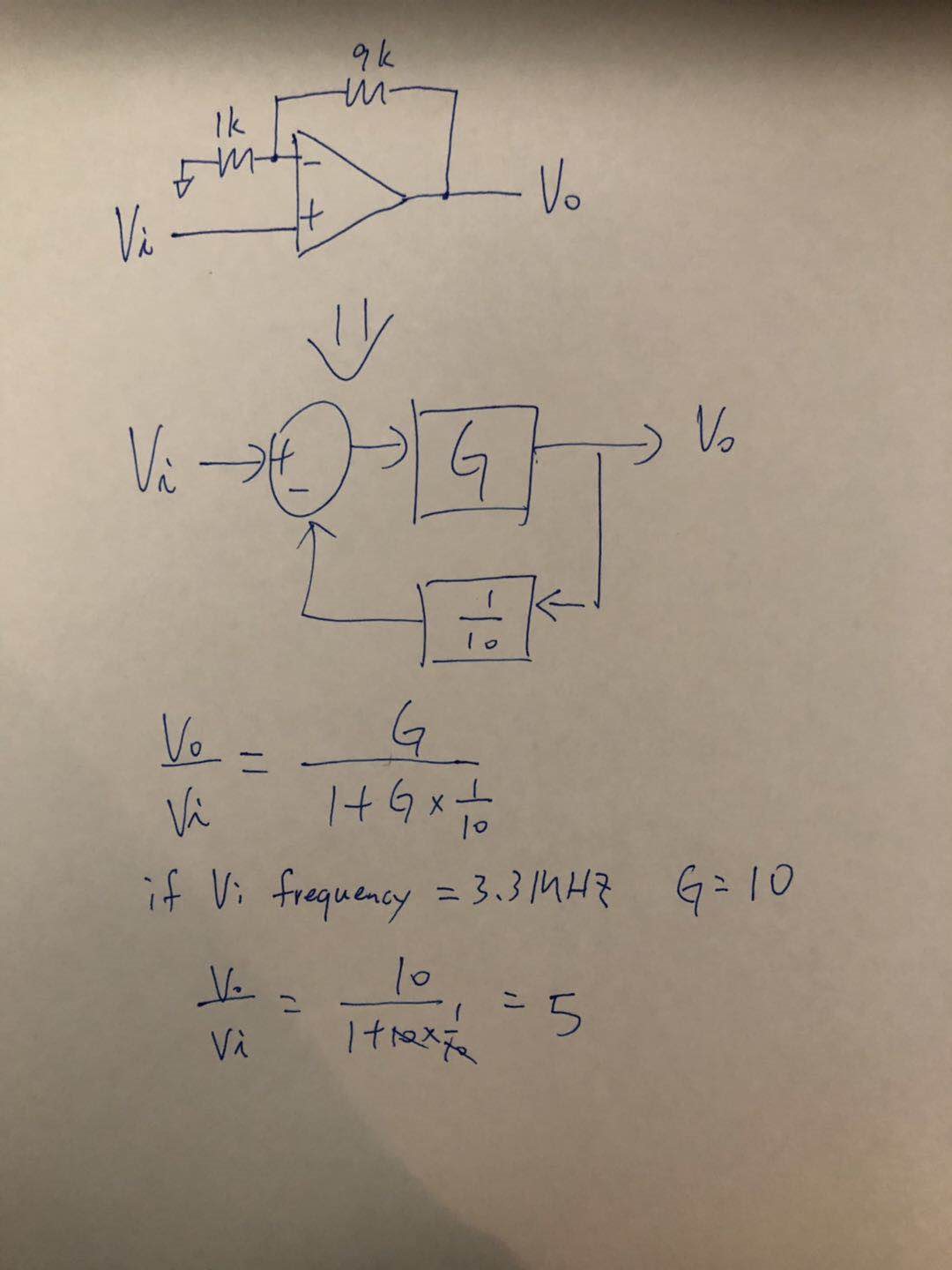Other Parts Discussed in Thread: LMP7717, OPA838
Hi ,
Customer's product is a high accuracy ac power line quality analyse equipment. They want to know whether the GBW is always constant in any condition?
They sch have 4 stage amp,every stage gain is 10. The OPA228 GBW is 33Mhz ,Dose it mean if the frequency less then 3.3Mhz the gain can be guaranteed by 10?
Or can I using the formula as below picture and the gain is 5 at input frequency equal to 3.3Mhz? Which is right?
Thanks


